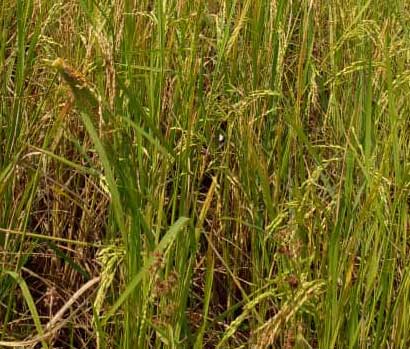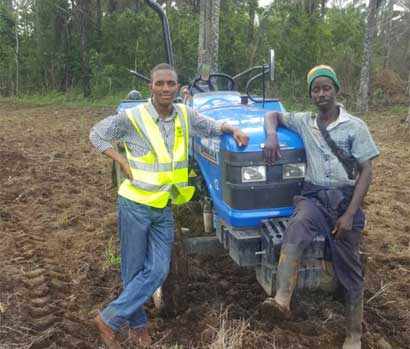- +1 (202) 438-6441
- earthregenerativeprojectsl@gmail.com
-
32 Wallace Johnson St Freetown SL

Regenerative and Climate-Smart Agriculture: A Sustainable Future
- $0 Raised Of $0
Regenerative and climate-smart agriculture is an innovative and sustainable approach to farming that aims to restore ecosystems, enhance soil health, and mitigate climate change impacts. This initiative embraces principles and practices that not only increase agricultural productivity but also promote biodiversity, conserve natural resources, and reduce greenhouse gas emissions.
Regenerative agriculture focuses on building healthy soils by minimizing soil disturbance, increasing organic matter content, and diversifying crop rotations. By doing so, it improves soil fertility, water retention, and nutrient cycling, leading to enhanced crop yields and resilience to climate variability. Climate-smart agriculture, on the other hand, integrates climate change adaptation and mitigation strategies into agricultural systems, ensuring their long-term sustainability.
Planting trees today is sowing the seeds of a cooler, greener tomorrow, a tangible solution to combat global warming. Each tree planted is a pledge to reduce global warming, an investment in a sustainable and resilient future for all.
One key aspect of this initiative is the use of agro-ecological practices, such as organic farming, agroforestry, and integrated pest management. These practices reduce the reliance on synthetic inputs, minimize water usage, and promote natural pest control mechanisms. Additionally, regenerative and climate-smart agriculture encourages the use of cover crops, which help prevent soil erosion, suppress weeds, and enhance soil carbon sequestration.
By adopting regenerative and climate-smart agricultural practices, farmers can play a crucial role in mitigating climate change. Healthy soils act as carbon sinks, absorbing and storing significant amounts of atmospheric carbon dioxide. These practices reduce the need for synthetic fertilizers and pesticides, which contribute to greenhouse gas emissions during their production and application.
To mitigate the climate effects of cutting down trees, it's essential to focus on sustainable forestry practices, afforestation (planting new trees), and reforestation efforts to maintain and restore forest cover. Forest conservation and management are critical components of global climate change mitigation strategies.
Regenerative and climate-smart agriculture fosters biodiversity conservation by providing habitats for beneficial insects, birds, and other wildlife. It promotes the preservation of natural ecosystems, including wetlands and forests, which contribute to climate regulation and provide additional ecological services.
To promote the adoption of regenerative and climate-smart agriculture, governments, research institutions, and agricultural organizations need to collaborate and provide support to farmers. This includes offering financial incentives, technical assistance, and knowledge-sharing platforms. Education and capacity-building programs are also essential to empower farmers with the necessary skills and knowledge to implement these innovative practices effectively.
The regenerative and climate-smart agriculture initiative presents a promising pathway towards sustainable and resilient food systems. By prioritizing soil health, biodiversity conservation, and climate change mitigation, this approach can help address the challenges of food security, environmental degradation, and climate change, while ensuring the long-term viability of agricultural production.
Stop Cutting Down TreesCutting down trees has significant climate effects that can contribute to climate change. Here are some of the main ways in which tree removal impacts the climate:
- Reduced Carbon Sequestration: Trees act as carbon sinks, meaning they absorb carbon dioxide (CO2) from the atmosphere during photosynthesis and store it as carbon in their trunks, branches, and roots. When trees are cut down, the stored carbon is released back into the atmosphere as CO2, increasing the concentration of greenhouse gases. This process contributes to the greenhouse effect and leads to global warming.
- Increased Greenhouse Gas Emissions: The process of cutting down trees often involves burning or decomposition of the felled trees. This releases additional CO2 and other greenhouse gases like methane (CH4) into the atmosphere. In some cases, trees are cut down for land conversion, such as agriculture or urban development, leading to further emissions as the land is disturbed and transformed.
- Loss of Biodiversity and Ecosystems: Trees and forests support a diverse range of plant and animal species. Clearing forests disrupts ecosystems, leading to the loss of habitat for various wildlife, and can push some species towards extinction. The loss of biodiversity can have cascading effects on the environment and ecosystem services, potentially impacting climate regulation.
- Altered Local Climate: Trees play a role in regulating local climates through a process known as evapotranspiration. They release water vapor through their leaves, which cools the surrounding air and forms clouds. When trees are removed, the cooling effect is reduced, leading to altered microclimates, potentially contributing to local temperature increases and changes in precipitation patterns.
- Deforestation and Land Use Change: Large-scale deforestation for agricultural expansion or other purposes can lead to significant changes in land use. When natural forest cover is replaced by agriculture or urban areas, it can lead to altered land surface properties, such as reduced evapotranspiration and increased surface albedo (reflectivity), which can further influence local and regional climate patterns.
- Feedback Loops: Deforestation and forest degradation can disrupt complex feedback loops that regulate the climate. For instance, the Amazon rainforest plays a crucial role in the water cycle, and its destruction could potentially lead to reduced rainfall in the region and beyond, impacting climate on a broader scale.
 Eng
Eng
 简体中文
简体中文
 French
French
 العربيّة
العربيّة




